It can be fun to breed your own zinnias - Part 23
zen_man
10 years ago
Related Stories
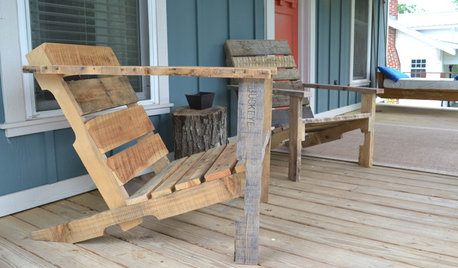
WOODWORKINGBuild Your Own Wooden Deck Chair From a Pallet — for $10!
Take the ecofriendly high road with a low-cost outdoor chair you make yourself
Full Story
PETSWhat Chihuahuas Can Teach Us About Interior Design
Who knew these tiny dogs could be such a huge fount of design tips? Houzzers did
Full Story
MORE ROOMSGetting the Room Right: Part II
Great spaces show how to avoid the Top 10 decorating mistakes
Full Story
KITCHEN DESIGNKick Back in Comfort in Your Own Kitchen Lounge
Keep the cook company or just relax solo in a kitchen hangout with all the comforts of a lounge
Full Story
DOORSKnow Your House: Interior Door Parts and Styles
Learn all the possibilities for your doors, and you may never default to the standard six-panel again
Full Story
EDIBLE GARDENSHow to Grow Your Own Sweet Summer Crops
This guide will help any gardener get started on growing the freshest warm-season veggies and berries for summer
Full Story
HOUZZ TVHouzz TV: This Dream Midcentury Home in a Forest Even Has Its Own Train
Original wood ceilings, a cool layout and, yes, a quarter-scale train persuaded these homeowners to take a chance on a run-down property
Full Story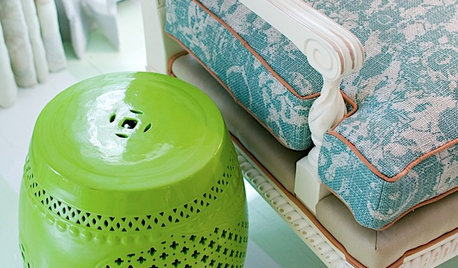
DECORATING GUIDESThe Most Helpful Furniture Piece You May Ever Own
Use it as a table, a seat, a display space, a footrest ... and indoors or out. Meet the ever-versatile Chinese garden stool
Full Story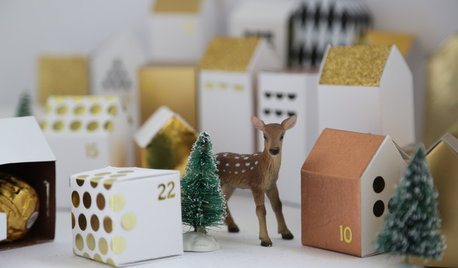
HOLIDAYSMake Your Own Mini Advent Village
Make the run-up to Christmas extra special with a treat a day in each tiny paper Advent house
Full Story
INSPIRING GARDENSWhat We Can Learn From Longwood Gardens’ New Meadow
Sustainability, ecology, native plant communities ... this public garden is brimming with lessons on horticulture for home gardeners
Full Story





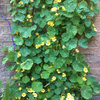
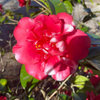
kdog2568
samhain10 - 5a
Related Professionals
Brentwood Landscape Architects & Landscape Designers · Pelham Landscape Contractors · Caldwell Landscape Contractors · Canton Landscape Contractors · Chesapeake Ranch Estates Landscape Contractors · Dallas Landscape Contractors · Paramount Landscape Contractors · Eastlake Landscape Contractors · Albany Driveway Installation & Maintenance · New Bedford Driveway Installation & Maintenance · Green Bay Decks, Patios & Outdoor Enclosures · Owings Mills Decks, Patios & Outdoor Enclosures · Paradise Valley Decks, Patios & Outdoor Enclosures · Reading Decks, Patios & Outdoor Enclosures · Decks, Patios & Outdoor Enclosureszen_manOriginal Author
samhain10 - 5a
zen_manOriginal Author
samhain10 - 5a
zen_manOriginal Author
samhain10 - 5a
samhain10 - 5a
zen_manOriginal Author
samhain10 - 5a
zen_manOriginal Author
samhain10 - 5a
mister_guy
samhain10 - 5a
zen_manOriginal Author
faisalpappu
samhain10 - 5a
zen_manOriginal Author
zen_manOriginal Author
samhain10 - 5a
zen_manOriginal Author
samhain10 - 5a
zen_manOriginal Author
samhain10 - 5a
zen_manOriginal Author
samhain10 - 5a
zen_manOriginal Author
samhain10 - 5a
zen_manOriginal Author
samhain10 - 5a
zen_manOriginal Author
mister_guy
zen_manOriginal Author
mister_guy
samhain10 - 5a
samhain10 - 5a
mister_guy
samhain10 - 5a
zen_manOriginal Author
zen_manOriginal Author
samhain10 - 5a
zen_manOriginal Author
telescody
samhain10 - 5a
zen_manOriginal Author
zen_manOriginal Author
samhain10 - 5a
zen_manOriginal Author
zen_manOriginal Author